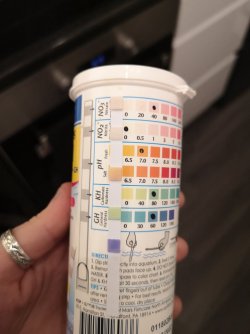I got mine from my local DIY shop. (Jeyes KleenOff Household Ammonia) Ammonia is also sold on Amazon and Ebay but be careful - it must not contain any detergent/surfactant or perfume.you might get ammonia in a chemists
In very simple terms, fish excrete ammonia as their equivalent of urine. This is poisonous to them. In an established tank there is a colony of bacteria which eat ammonia and poop out nitrite, which is also poisonous to fish. In an established tank there is another colony of bacteria which eat this nitrite and they poop out nitrate. There are no bacteria which eat nitrate so we have to remove it with water changes.
In a brand new tank, there are no bacteria; we have to grow them. We do this by adding ammonia from a bottle and this feeds the very few bacteria in the water, or those in a bottle of Tetra Safe Start so they can multiply and grow a lot more of them. The process of growing the bacteria is called cycling.
In a brand new tank there is no ammonia or nitrite because there are no fish to make ammonia and no bacteria to make nitrite so when a tank without fish is tested the results look perfect. If fish are then put in the tank without growing the bacteria first, the water very quickly becomes non-perfect.
Nitrate is a bit more complicated because a lot of places have a high amount of it in tap water. So when we fill the tank we can add a lot of nitrate. UK legislation allows a maximum of 50 ppm in drinking water and may places in the UK have levels almost that high. We must always measure nitrate in tap water so we know how much of the nitrate in the tank comes from the tap water and how much is being made in the tank.
Please test your tap water for nitrate so we know how much in in there.
The API test strip instructions are out of date. They say nitrate must be under 40 ppm but we now know that the maximum should be 20 ppm not 40. This may be what the shop is questioning. If they know that nitrate should be under 20, your tank level is double that.



